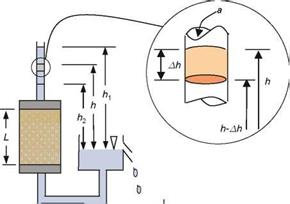Falling Head Test
In the falling head test the head is a function of time during testing while water from a standpipe flows through the soil. The falling head test is preferably used for soils with low permeability, i. e. silty or clayey soils (see Fig. 3.8). For such soils the problem of excessively high hydraulic gradients (Fig. 3.7) is avoided as well as the practical issue that, otherwise, the head would fall too rapidly.
Equating the instantaneous flow due flow of water through the specimen according to Darcy’s law with the flow necessary for continuity gives:
![]()
![]()
 Fig. 3.8 Falling head permeability test
Fig. 3.8 Falling head permeability test
|
|
|
|
|
|
|
|
|
|
|
|






Leave a reply